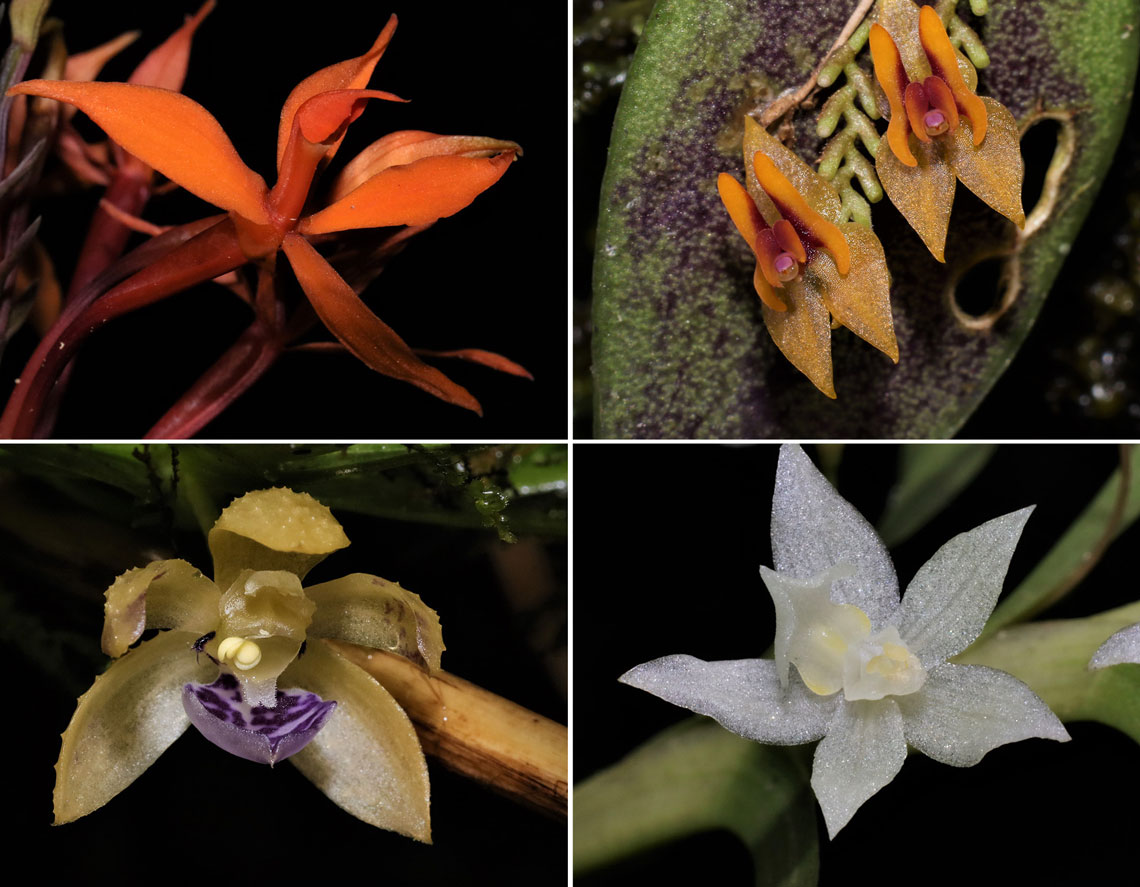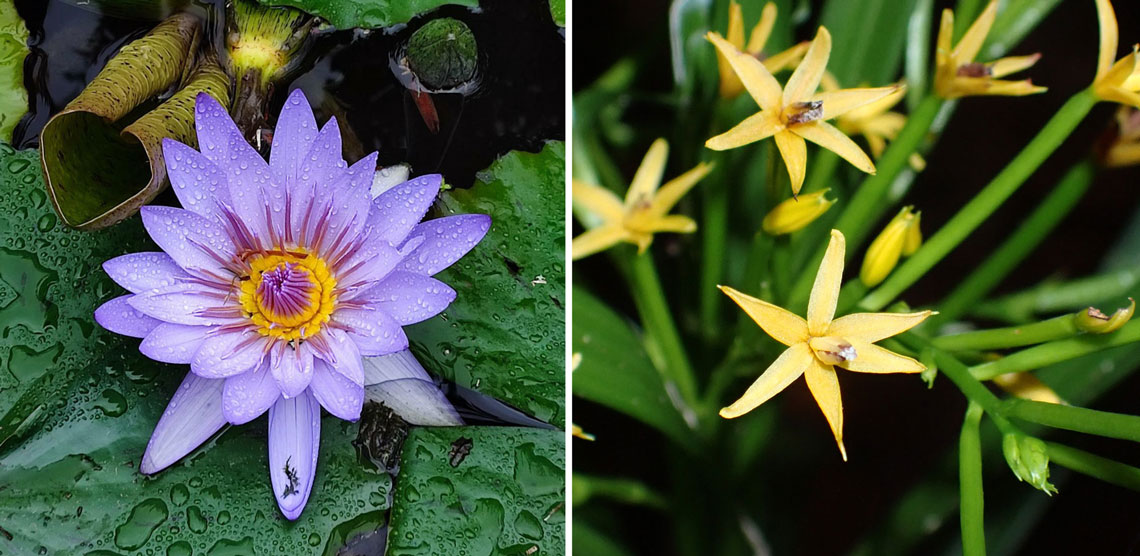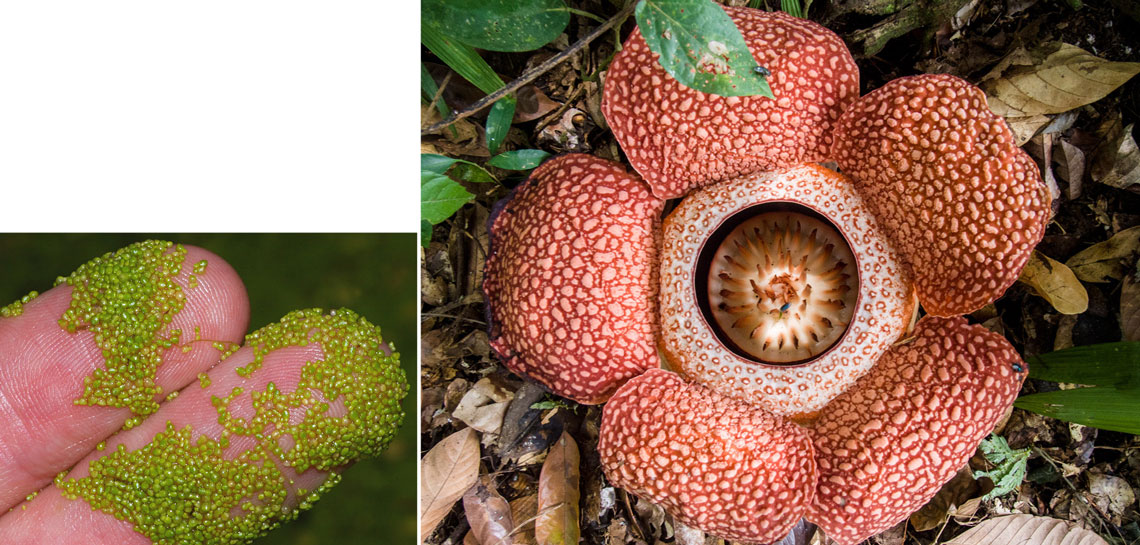Present-day orchids are known for their large, eye-catching blooms that often dominate the displays at flower shops. However, the earliest orchids had small, inconspicuous flowers, resembling those of the tomato plant, and grew on the forest floor, in the shadows of pine trees in the Northern Hemisphere. Over time, they adapted to nearly every environment, with the exception of deserts and the frozen poles. In the past 5 million years, they have diversified into a wide range of species, especially in the tropics, as highlighted by a study published in April in New Phytologist.
The study, led by researchers from the Royal Botanic Gardens, Kew, in London, involved an international team of 46 scientists from 33 institutions across 16 countries, including Brazil’s State University of Feira de Santana (UEFS) and Federal University of Paraná (UFPR). The collaboration developed a new phylogenetic tree for orchids by analyzing 353 segments of DNA from 1,921 species, representing 38% of the family’s genera — a sample size 12 times larger than in previous studies.
“Orchids likely originated on the ancient continent of Laurasia, rather than in Australia as previously believed,” explains Oscar Pérez-Escobar, a Colombian botanist at Kew, one of the lead authors of the study. Laurasia emerged around 130 million years ago when the supercontinent Pangaea broke up into Gondwana in the South and Laurasia in the North. About 46 million years ago, Laurasia itself fragmented into what we now know as North America, Europe, and Asia — leading to the evolution of separate lineages of species, including orchids.
Over the past 3 million years, tectonic activity has raised the Talamanca mountain range in Central America by about 1 kilometer every million years, reaching a current altitude of approximately 3,800 meters. These new mountain chains created isolated orchid populations, which rapidly differentiated into new species as they adapted to their different environments.
Orchids, with their diverse scents — ranging from fruity and jasmine-like to chocolatey, and even foul-smelling for species that attract pollinating flies — have become the second-largest plant family on the planet with nearly 30,000 species, or 9% of all flowering plants. They exhibit a wide range of forms, from the giant orchid (Grammatophyllum speciosum), whose flower spikes can reach 2 meters in height, to the small and rare Pogoniopsis schenckii from the Atlantic Forest, which has white leaves and relies on fungi for survival since it lacks chlorophyll and cannot photosynthesize.

Oscar Pérez-Escobar/KEWA vibrant display of colors and shapes in Central American orchids: Domingoa nodosa (top), Epidendrum wrightii, Lepanthes cassicula, Dichaea trichocarpa, and Dichaea graminoides, also found in South AmericaOscar Pérez-Escobar/KEW
About 90% of orchids live on the branches or trunks of trees in tropical forests. Like bromeliads and ferns, they are epiphytes: they grow on other plants without drawing nutrients from their hosts. They are most abundant in mountainous regions with high rainfall. According to Pérez-Escobar, you can find up to 10 different types of orchids on a single tree, each adapted to a specific environment or part of the host, like the trunk or the canopy.
Central America, relative to its size, has the highest orchid diversity: it makes up just 0.5% of the world’s land area but is home to 4.5% of all orchid species, especially in Costa Rica and Panama, which together harbor at least 2,900 known species. While countries like Colombia and Ecuador each boast around 4,200 species, their larger territories have seen slower diversification — the Andes mountain range was formed over the past 15 million years.
In Brazil, about 60% of the country’s 2,300 orchid species are found in Atlantic Forest formations along Serra do Mar, a mountain ridge stretching from Rio Grande do Sul to southern Bahia. However, research suggests that the fastest diversification occurred in the Cerrado (a wooded savanna biome). “It’s a newer environment, where most plant lineages diversified less than 4 million years ago,” explains Cássio van den Berg, a professor of crop science at UEFS and one of the study’s authors. Enduring long droughts, orchids like Cyrtopodium cardiochilum bloom shortly after the periodic natural fires in this habitat, sprinkling the ashes with tiny yellow flowers.
“The team conducted a sophisticated analysis of orchid evolution, using a larger sample than previous studies,” says Edlley Pessoa, a biologist at the Federal University of Mato Grosso (UFMT), who was not involved in the research. He notes, however, that the sample contains more Central American plants and fewer plants from non-forest regions like the Cerrado and African savanna, which could skew the results. “With even larger samples, the conclusions might change,” he suggests.

Anonimous Pug / Inaturalist | Jean-Paul BoerekampsAncient flowering plant lineages: the water lily Nymphaea nouchali and the orchid Apostasia wallichiiAnonimous Pug / Inaturalist | Jean-Paul Boerekamps
Another challenge in tracing the evolutionary history of orchids, according to Pessoa, is that these plants left few fossils, as their delicate structures don’t fossilize well, making it hard to pinpoint when and where they lived, and how different lineages spread to their current locations.
Up until now, most genetic studies on plants have used DNA from chloroplasts, the structures that perform photosynthesis. Since this DNA is inherited only from the mother plant, researchers were unsure if the phylogenies were accurate, but this study confirmed the main evolutionary branches and fine-tuned the relationships within smaller groups. The researchers used magnetic nanoparticles to capture DNA from the nuclei of plant cells and developed a method to isolate and sequence hundreds of specific DNA fragments.
The authors explain that the more genes they analyze, the more detailed the evolutionary tree of species becomes, enabling a deeper understanding of plant ecology, geographical distribution, and how these species have responded to climate change over their evolutionary history.
“In six years, we’ll likely be able to sequence the entire genome of many species,” Berg predicts. However, he notes that the biggest challenge will be obtaining samples from living specimens that provide complete DNA. In 2004, Berg identified Adamantinia miltonioides, a species found on mountain peaks, which represents a unique and isolated branch of the orchid family. “With global warming, species like this could disappear, taking with them vital information about the evolution of plant life,” he cautions.

Christian Fischer | Mike PrinceThe largest angiosperm, the foul-smelling Rafflesia keithii (left), and the smallest, Wolffia arrhizaChristian Fischer | Mike Prince
The orchid study is part of a global initiative led by researchers at the Royal Botanic Gardens, Kew, to refine the evolutionary tree of the 416 families of flowering plants, known as angiosperms. The research team found that 80% of modern plant lineages, including orchids, suddenly appeared around 150 million years ago, during the transition between the Jurassic and Cretaceous periods, according to an article published April in Nature.
“This event is unprecedented in plant evolution and led to the vast diversity of angiosperms today,” says Alexandre Zuntini, a Brazilian biologist at Kew and the lead author of the article, who helped coordinate 279 botanists from 27 countries, including 16 from Brazil. The study examined 9,500 species across 8,000 genera, covering 60% of all angiosperm genera — a sample 15 times larger than in previous studies.
The rapid diversification and worldwide dominance of angiosperms, which now make up 90% of all plant species, had already intrigued British naturalist Charles Darwin (1809-1882). In a letter to his colleague Joseph Hooker (1817-1911), then director of Kew, Darwin called this event an “abominable mystery of evolution.” The subject remains debated to this day. Since the delicate flowers and fruits of early angiosperms rarely survive in the fossil record, it can be difficult to trace how these small, unassuming, tiny-flowered ancestral plants evolved into the diverse forms we see today.
When flowers and fruits first emerged, they may have triggered an ecological revolution in terrestrial environments. This hypothesis suggests that new ecological interactions, like pollination and seed dispersal by animals, accelerated evolution, boosted ecosystem productivity, and expanded the reach of tropical forests.
“Researching this diversity is only possible through global research collaborations,” says Antonelli. This project’s success is partly due to Kew’s development of an open-access technique for sequencing large portions of plant DNA, which standardizes analyses that were previously difficult to compare. The new method also enabled researchers to extract DNA from 7,000 dried specimens preserved in herbaria, even if they had been degraded by time.
One such specimen was Hesperelaea palmeri, an olive tree last seen alive in 1875 on Guadalupe Island, Mexico, which was likely driven extinct by feral goats. Antonelli notes that understanding plant diversification can help identify species beneficial to humans and prioritize species for conservation.
Scientific articles
PÉREZ-ESCOBAR, O. A. et al. The origin and speciation of orchids. New Phytologist. vol. 242, no. 2, pp. 700–16. apr. 2024.
ZUNTINI, A. R. et al. Phylogenomics and the rise of the angiosperms. Nature. Online. apr. 24, 2024.
BENTON, M. J. et al.The angiosperm terrestrial revolution and the origins of modern biodiversity. New Phytologist. vol. 233, no. 5, pp. 2017–35. mar. 2022.
